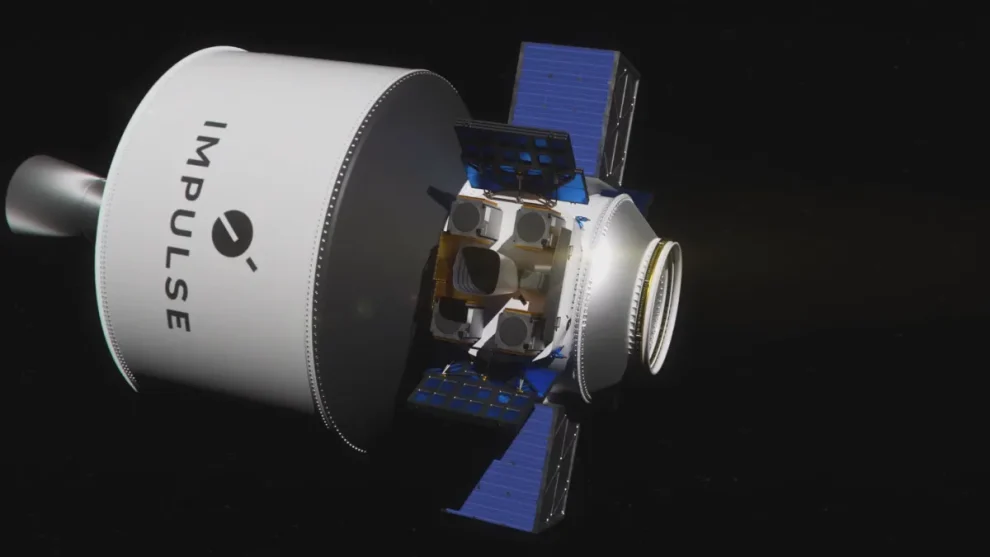Defense technology company Anduril Industries and in-space transportation company Impulse Space have announced a strategic collaboration to develop AI-driven satellite mobility solutions. This partnership brings together Anduril’s expertise in artificial intelligence and autonomous systems with Impulse Space’s innovative propulsion technologies, potentially revolutionizing how satellites maneuver and operate in orbit.
A New Frontier in Space Technology
The collaboration between Anduril and Impulse Space marks a significant milestone in the ongoing evolution of satellite technology. By combining advanced AI algorithms with cutting-edge propulsion systems, the two companies aim to create a new generation of satellites capable of unprecedented levels of autonomy and efficiency in orbital operations.
The Power of AI in Space
Artificial Intelligence has already proven its worth in numerous terrestrial applications, from self-driving cars to complex data analysis. Now, Anduril plans to leverage its extensive experience in AI and machine learning to tackle the unique challenges of space operations. The company’s AI systems are expected to enable satellites to make real-time decisions about their positioning, trajectory, and mission objectives, all while optimizing fuel consumption and avoiding potential collisions.
Impulse Space’s Propulsion Innovation
Impulse Space, founded by former SpaceX engineer Tom Mueller, brings to the table its innovative approach to in-space propulsion. The company has been working on developing highly efficient and maneuverable propulsion systems designed specifically for use in the space environment. These systems promise to provide satellites with greater mobility and precision in orbital adjustments, opening up new possibilities for mission profiles and satellite longevity.
The Technological Leap
The collaboration between Anduril and Impulse Space is set to push the boundaries of what’s possible in satellite technology. Here are some of the key technological advancements we can expect to see:
1. Autonomous Collision Avoidance
With the increasing number of satellites and debris in orbit, collision avoidance has become a critical concern. The AI-driven systems developed through this collaboration are expected to provide real-time threat assessment and autonomous collision avoidance capabilities, significantly reducing the risk of orbital collisions.
2. Optimized Orbital Positioning
AI algorithms will analyze various factors such as mission objectives, Earth observation requirements, and communication needs to determine the optimal orbital position for each satellite. The advanced propulsion systems will then allow for precise and efficient repositioning.
3. Adaptive Mission Planning
Satellites equipped with this new technology will be able to adapt their mission parameters on the fly. This could include changing observation targets based on real-time data or adjusting communication relay patterns to optimize global coverage.
4. Efficient Fuel Management
By combining AI-driven decision making with high-efficiency propulsion systems, satellites will be able to manage their fuel reserves more effectively, potentially extending their operational lifespan by months or even years.
5. Swarm Coordination

The AI systems developed through this collaboration could enable coordinated operations between multiple satellites, allowing for the creation of dynamic satellite constellations that can work together to achieve complex mission objectives.
Implications for the Space Industry
The partnership between Anduril and Impulse Space has far-reaching implications for the entire space industry. Here are some of the potential impacts:
1. Enhanced Earth Observation
With more maneuverable and intelligent satellites, Earth observation missions could become significantly more effective. Satellites could reposition themselves quickly to monitor evolving situations on the ground, from natural disasters to agricultural patterns.
2. Improved Space-Based Communications
AI-driven satellite mobility could lead to more robust and flexible communication networks in space. Satellites could dynamically adjust their positions to optimize coverage or respond to increased demand in specific areas.
3. Space Debris Mitigation
The advanced collision avoidance capabilities could play a crucial role in mitigating the growing problem of space debris. Moreover, at the end of their operational life, these intelligent satellites could potentially navigate themselves into safer disposal orbits more effectively.
4. Cost Reduction in Satellite Operations
By optimizing fuel usage and extending satellite lifespans, this technology could significantly reduce the long-term costs of maintaining satellite constellations. This could make space-based services more economically viable for a wider range of applications.
5. Enabling New Mission Profiles
The combination of AI decision-making and advanced propulsion could enable entirely new types of space missions that were previously impractical or impossible due to the limitations of traditional satellite technology.
Challenges and Considerations
While the collaboration between Anduril and Impulse Space holds immense promise, it also faces several challenges:
1. Regulatory Hurdles
The deployment of autonomous, AI-driven satellites will likely face scrutiny from regulatory bodies concerned about space safety and potential military applications. Clear guidelines and regulations for the use of AI in space will need to be developed.
2. Technical Complexity
Developing AI systems capable of operating reliably in the harsh and unpredictable environment of space presents significant technical challenges. Extensive testing and validation will be necessary to ensure the safety and reliability of these systems.
3. Data Management
AI-driven satellites will generate and process vast amounts of data. Developing systems to efficiently transmit, store, and analyze this data will be crucial for the success of this technology.
4. Ethical Considerations
The use of AI for autonomous decision-making in space raises ethical questions, particularly when it comes to potential dual-use technologies that could have both civilian and military applications.
5. International Cooperation and Competition

As this technology develops, it will be important to consider its impact on international space cooperation and competition. Clear protocols for the use of AI-driven satellites in shared orbital space will need to be established.
Industry Reactions
The announcement of the collaboration between Anduril and Impulse Space has generated significant buzz within the space and technology industries. Here are some reactions from key figures:
Dr. Ella Martinez, Space Policy Expert at the Center for Strategic and International Studies: “This collaboration represents a significant leap forward in satellite technology. The potential for AI-driven mobility to enhance our space capabilities is immense. However, it also underscores the need for updated international frameworks to govern the use of autonomous systems in space.
John Chen, CEO of Orbital Dynamics, a satellite operations company: “The combination of Anduril’s AI expertise and Impulse Space’s propulsion technology could be a game-changer for the entire industry. If successful, this could dramatically reduce operational costs and open up new possibilities for satellite-based services.”
Cmdr. Sarah Thompson, U.S. Space Force (ret.), now a consultant on space security: “While the potential benefits are clear, we must also consider the security implications of highly maneuverable, AI-driven satellites. This technology could significantly impact space domain awareness and potentially alter the strategic balance in space.
The Road Ahead
As Anduril and Impulse Space embark on this collaborative journey, several key milestones lie ahead:
1. Research and Development Phase
The initial phase of the collaboration will likely focus on integrating Anduril’s AI systems with Impulse Space’s propulsion technologies. This will involve extensive modeling, simulation, and ground-based testing.
2. Prototype Development
Once the initial R&D phase is complete, the companies are expected to develop prototype satellites incorporating their combined technologies. These prototypes will undergo rigorous testing to ensure they meet the stringent requirements for space operations.
3. In-Orbit Demonstration
The true test of this technology will come with in-orbit demonstrations. Initial launches of AI-driven, highly maneuverable satellites will provide valuable data on their performance and capabilities in the actual space environment.
4. Scaling and Commercialization
If the initial demonstrations prove successful, the next step would be to scale up production and begin integrating this technology into commercial and government satellite programs.
5. Ongoing Innovation
As with any cutting-edge technology, continuous innovation will be key. Both Anduril and Impulse Space are likely to iterate on their designs based on real-world performance data and emerging needs in the space industry.
Broader Implications for Space Exploration
The collaboration between Anduril and Impulse Space could have far-reaching implications beyond Earth orbit. As we look towards renewed lunar exploration and eventual human missions to Mars, the technologies developed through this partnership could play a crucial role:
1. Automated Space Tugs
AI-driven, highly maneuverable spacecraft could serve as automated space tugs, moving cargo and equipment between different orbits or even between Earth and lunar orbit. This could significantly reduce the cost and complexity of lunar missions.
2. Adaptive Exploration Probes
For deep space exploration, probes equipped with AI decision-making capabilities and efficient propulsion systems could adapt their trajectories and mission profiles based on real-time discoveries, potentially revolutionizing how we explore the solar system.
3. On-Orbit Servicing and Manufacturing
The precise maneuvering capabilities enabled by this technology could be crucial for the development of on-orbit servicing and manufacturing capabilities, key components of a sustainable space economy.
4. Planetary Defense
In the realm of planetary defense, AI-driven spacecraft with advanced propulsion could potentially be used to deflect or redirect potentially hazardous near-Earth objects with greater precision and efficiency.
A New Chapter in Space Technology
The collaboration between Anduril and Impulse Space marks the beginning of a new chapter in space technology. By bringing together cutting-edge AI capabilities with innovative propulsion systems, this partnership has the potential to redefine what’s possible in satellite operations and space exploration.
As we stand on the brink of this new era, it’s clear that the implications of AI-driven satellite mobility extend far beyond just technological advancement. This development could reshape our approach to space utilization, exploration, and even our understanding of our place in the cosmos.
While challenges remain, particularly in the realms of regulation, ethics, and international cooperation, the potential benefits of this technology are immense. From enhancing our ability to monitor and protect our planet to enabling more ambitious deep space exploration missions, the ripple effects of this collaboration could be felt for decades to come.
As Anduril and Impulse Space move forward with their groundbreaking work, the eyes of the space industry—and indeed, the world—will be watching closely. The success of this endeavor could very well set the stage for the next great leap in humanity’s journey to the stars.
















Add Comment